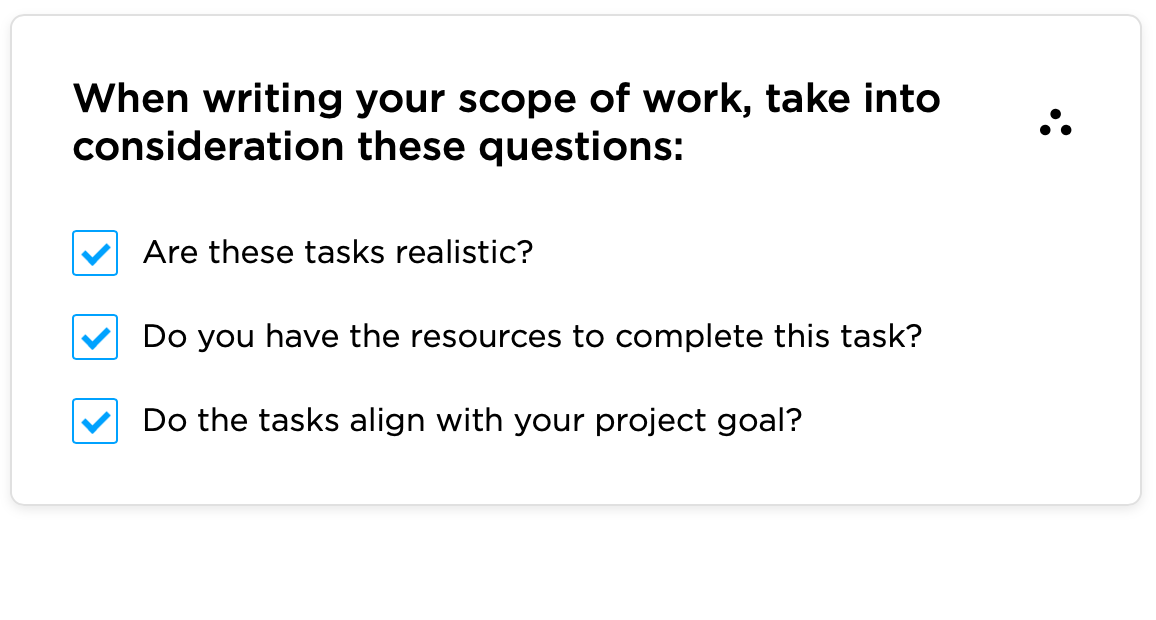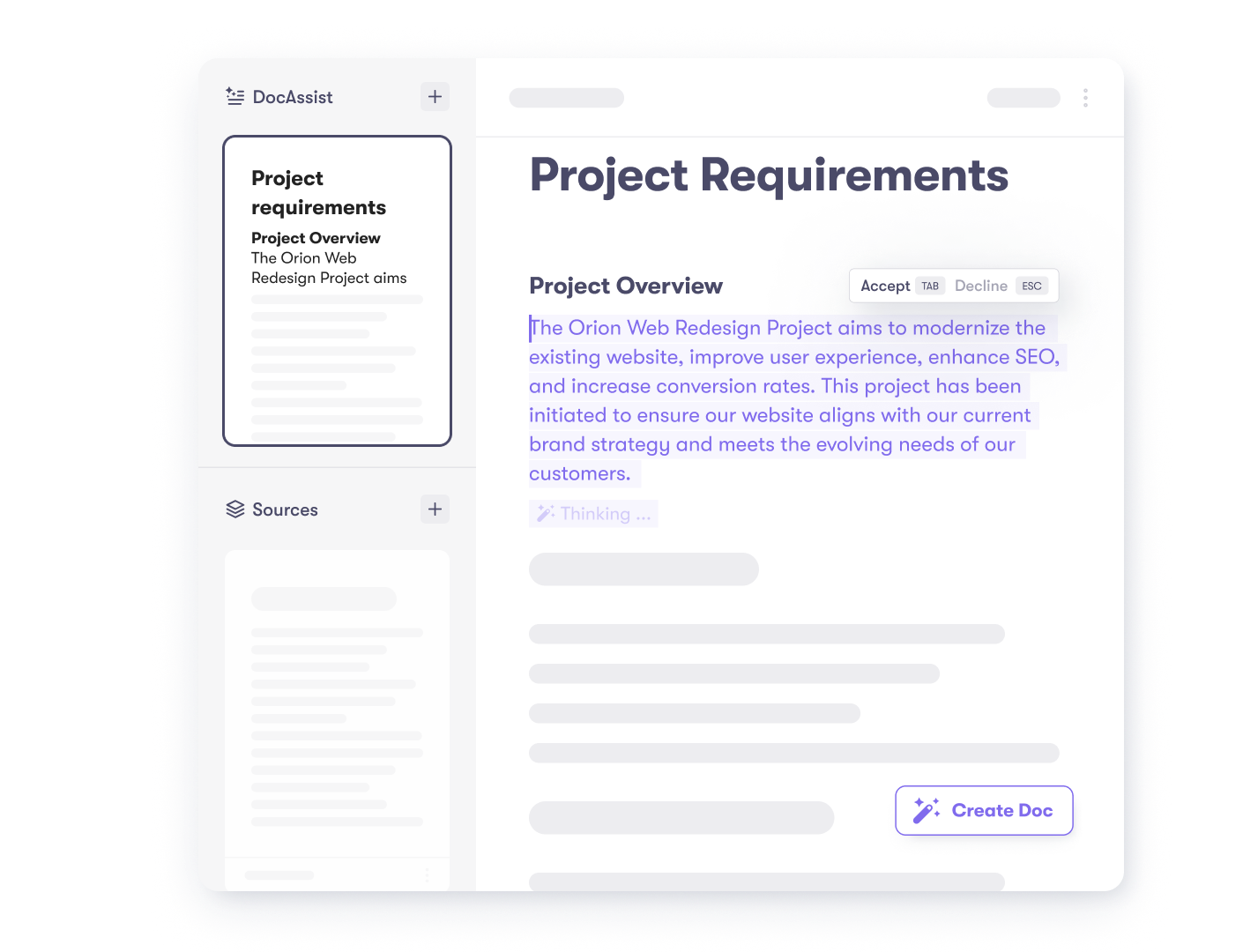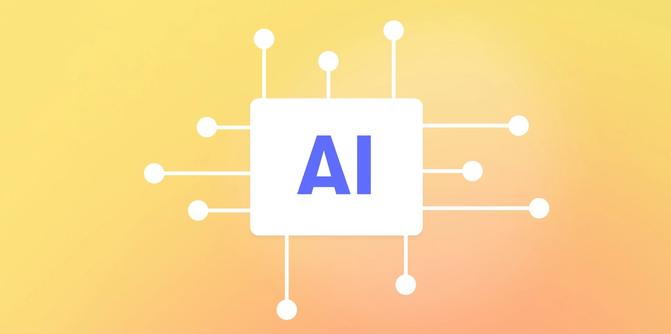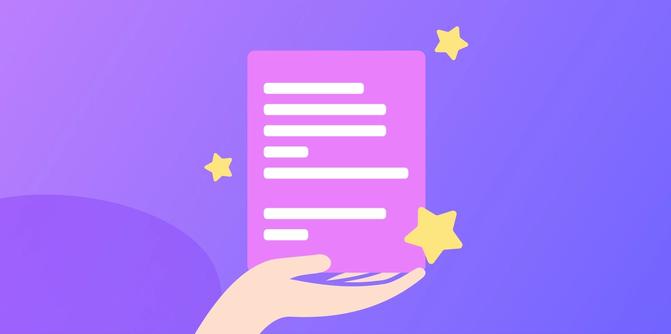Scope of Work: Definition, Examples, and How-To

Scope of Work: Definition, Examples, and How-To
How to write an effective Scope of Work for any project. Plus, some examples and a template to get you started.
What is a Scope of Work?
A Scope of Work is a document that summarizes project tasks, assignments, and deliverables and is an invaluable tool in project management.
According to the Project Management Institute, one of the top five reasons for project failure is poor planning. In fact, organizations waste about $97 million for every $1 billion invested, due to this poor planning. Ouch.
Producing an effective Scope of Work can guarantee that projects are properly planned and outlined, resulting in less wasted revenue and a higher rate of efficiency.
Read on to find out how to write a Scope of Work, as well as an example of how Collato can write your Scope of Work document for you!
Scope of Work definition
A Scope of Work is an agreement of the work needed for a project. It brings together all the most important elements of your project foundation, including tasks, assignments, and deliverables. They define what needs to be done in order to reach the project goal.

Statement of work vs. Scope of Work
A statement of work (SOW) is an all-encompassing document that lays a foundation for your project. The contents include goals, timelines, schedules, payment agreements, etc. But most importantly, your SOW consists of a Scope of Work.
But, when it comes to the difference between SOW and Scope of Work, there is a debate within the creative industry. Some argue that they’re identical documents, and others allege that they’re interconnected but still different.
We like to think of it like this: a Scope of Work is a section within your statement of work. Your SOW lists out all the criteria to make a project successful and your Scope of Work describes how exactly you’ll accomplish this. For example, if the project goal is to redesign a website, then the Scope of Work might include detailed information on how to create a new sitemap or better map out an ideal user flow.
Regardless of whether an SOW and a Scope of Work are the same or not, we can all agree that they both serve a similar purpose, to fulfill the project goals and objectives!
How to write a Scope of Work
Similar to any product document, every Scope of Work is unique. Let's dive deeper into the elements that should be included in your Scope of Work, with examples. Already want to get started? Use Collato to record your meetings with stakeholders and take your notes, then use the following template to instantly create a Scope of Work document based on what was discussed.
Free Scope of Work template
Need a little more structure when writing your Scope of Work? No problem. You can copy & paste the following template into Collato's template editor.
Overview and Objectives
- Overview Statement: [Provide a high-level overview of the project, including the problem statement and the issue to be solved]
- Project Objectives: [Describe the expected outcome of the project]
- Resources Required: [Specify resources required for project completion]
- Stakeholders: [List all stakeholders involved in the project with contact information]
Project Schedule
- Overall Start and Finish Dates: [Specify the project timeline]
- Phase 1: [Describe the first phase with start and end dates]
- Phase 2: [Describe the second phase with start and end dates]
- Phase 3: [Describe the third phase with start and end dates]
Task Management
- Task 1: [Describe the first task with assignee and due date]
- Task 2: [Describe the second task with assignee and due date]
- Task 3: [Describe the third task with assignee and due date]
- Task 4: [Describe the fourth task with assignee and due date]
Deliverables
- Deliverable 1: [List the first deliverable]
- Deliverable 2: [List the second deliverable]
- Deliverable 3: [List the third deliverable]
Out of Scope
- [Specify tasks or features not included in the project scope]
Success Criteria and Sign Off
- Criteria Element 1: [Describe the first success criterion and sign-off details]
- Criteria Element 2: [Describe the second success criterion and sign-off details]
1. Tasks
It’s no secret that task management is a fundamental part of any project, especially if your project requires cross-departmental collaboration or multiple stakeholders. That’s why you’ll need to include a breakdown of your project goal into smaller and applicable steps, or tasks, in your Scope of Work.
To better understand your project tasks, let’s create a hypothetical situation. Say you’re planning a vacation to Australia (uh, wouldn’t that be nice☀️). What needs to be done?
- Apply for a visa
- Book the flight
- Find an Airbnb
- Rent a car
- Plan your daily excursions
These are the things (tasks) that you need to do in order to go on your trip (goal).

2. Deliverables
Deliverables are the end-product or service of your tasks. In other words, it is what your client will receive at the end of the project.
Using our last example, if your task is finding an Airbnb, a deliverable would be the booking confirmation. You completed this task, and there is a quantifiable service or product. The completion of your tasks and the accumulation of your deliverables make up a finished creative project.

Your deliverables can also be “stacked,” meaning that one deliverable can have its own deliverables. For instance, if the project goal is to build a website, your deliverables might be a website wireframe and website mockup.
3. Point of Contact
Another helpful element of a Scope of Work is point of contact. Who will complete each task? By including a person for each task and deliverable, everyone knows their role in the project, right from the start. This leaves little room for miscommunication and unfinished assignments.
How to avoid scope creep
Watch out for scope creep, the sneaky way a project transforms from one thing to another. Scope creep is defined as “adding features and functionality without addressing the effects on time, costs, and resources, or without customer approval” (pmi.org). It can be the root cause of wasted money, low customer satisfaction, or unreached project goals.
Scope creep happens for a variety of reasons:
- Unmanaged and undocumented collaboration between clients and team members
- Lack of a solid initial project scope
- Uninvolved stakeholders
- Poorly defined assignments and requirements
- Unattainable or unrealistic tasks and deliverables
- Overall poor communication and collaboration
While project changes are inevitable, there are a few ways to avoid scope creep.
1. Document everything
Keep a track record of your internal and external interactions, whether that’s through a phone call, an email, or a meeting. This may seem obvious, but if a stakeholder requests a change to a design or a feature, then you want to document that in your Scope of Work.
2. Make a schedule
Create a schedule to show any requirements, assignments, or due dates that need to be fulfilled. You can always refer back to this schedule to make sure the project is on its way.
3. Get sign offs
Make sure your Scope of Work (and better yet, your statement of work) is signed off by all participating parties. If you notice a stakeholder asking for something more than what was agreed upon, then you can deny the task or create a new project that incorporates it.
That being said, it’s important to add a section within your Scope of Work called 'out of scope.’ You can add any small assignments or tasks to this section that don’t fit the initial agreement. You can then make a new project or write up a new contact with your client.
Scope of Work example
We used Collato to write a Scope of Work for Dots, a fictional social media app. Using our Scope of Work template, we created the following example Scope of Work for the sharing feature on Dots:
Overview
The sharing feature will allow users to share content with each other in real time. This will allow users to collaborate on projects, brainstorm ideas, and share knowledge.
Objective
The objective of the sharing feature is to improve collaboration and communication between users.
Resources Required
The following resources will be required to develop the sharing feature:
* Engineering resources
* QA resources
* UX/UI designers
* Marketing resources
Stakeholders
The following stakeholders will be involved in the development of the sharing feature:
* Product managers
* Engineering managers
* QA managers
* UX/UI designers
* Marketing managers
Milestones & Timeline
The following milestones are planned for the development of the sharing feature:
* Q1 2023: Design and development of the sharing feature
* Q2 2023: Beta testing of the sharing feature
* Q3 2023: General availability of the sharing feature
Tasks
The following tasks will be required to develop the sharing feature:
* Design the sharing feature
* Develop the sharing feature
* Test the sharing feature
* Market the sharing feature
Deliverables
The following deliverables will be produced as part of the development of the sharing feature:
* Design documentation
* Development documentation
* Test plans
* Marketing materials
Out of Scope
The following features are out of scope for the sharing feature:
* Sharing of sensitive or personal information
* Sharing of files larger than a certain size
* Sharing of files with certain file extensions
Success Criteria
The following success criteria will be used to measure the success of the sharing feature:
* Number of users using the sharing feature
* Number of shares per day
* Number of positive reviews of the sharing feature
Of course, a real Scope of Work will be much more comprehensive and will need more specific details. A Scope of Work should include, at the very least:
- Project objectives
- Schedule/Milestones
- Individual tasks
- Deliverables
- Payment information
- Expected outcomes
- Terms, conditions, requirements
Transform your meeting notes into a Scope of Work
Leveraging AI to create a Scope of Work (SOW) can greatly enhance efficiency and accuracy in project management. By using Collato, you can save time and effort in composing the document, you’re provided a structured framework to include project objectives, schedules, tasks, deliverables, payment details, and more. Collato is a valuable ally in crafting and managing SOWs, enhancing the overall project's efficiency and success.
Here’s how it works:
You can use Collato to record your meetings and take your notes (just invite ally@collato.com to the meetings you want recorded). You can also upload any images, wireframes, sketches, or whiteboards you want included in your notes. Collato can then transform your notes into any document using templates.
So just pick the template you want, or create your own, and then watch the magic happen. To write the perfectly tailored AI-generated Scope of Work, follow these steps:
- Create a note: Record a meeting, write down your thoughts, or upload an image. Your notes are the sources of your documents.
- Create your document: Select a note you want to turn into a document. You can include as many notes as you wish to be sourced in your final document. Then, click "Create doc."
- Select a template: Choose a template from the template library, or create your own. You can also edit any template using the template editor.
- Customize your doc: Update the template descriptions to be exactly what you need your document to include. The descriptions function as AI prompting.
- Watch the magic happen: Once you select the template you want to use and have edited it to meet your needs, your document will be autofilled by AI, sourcing from the notes you've linked. You can keep the AI generated text by hitting "tab," or regenerate it by backspacing and hitting enter. You can also edit the text yourself.
Need to write more than just a Scope of Work document? No problem. Collato instantly writes any product document like PRDs, PR/FAQs, and Meeting Minutes, too.

Conclusion
A Scope of Work (SoW) is a pivotal document that concisely outlines project tasks, assignments, and deliverables. It serves as a fundamental tool in project management, providing clarity and mitigating the risk of poor planning that can result in significant financial losses. The SoW encompasses essential project elements, including tasks, assignments, and deliverables, offering a roadmap to achieve project goals and is closely related to a Statement of Work (SOW), sharing the core objective of guiding and fulfilling project objectives.
To create an effective SoW, follow a structured approach that encompasses task definition, deliverable specification, point of contact assignment, and inclusion of critical project details such as schedules, milestones, payment terms, and specific requirements. This comprehensive approach not only guides the project but also minimizes the risk of scope creep, making the SoW an indispensable tool in project management. Leveraging AI tools like Collato can significantly enhance SoW efficiency, as Collato can instantly generate tailored Scope of Works from your notes, streamlining the process and contributing to overall project success.




